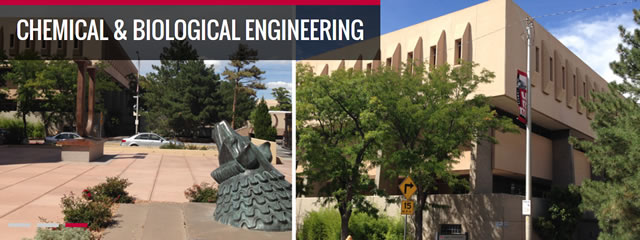
Chemical and Biological Engineering ETDs
Publication Date
5-31-1967
Abstract
Study of the effects of contaminants on interface mass transfer in fluid-fluid systems has been the object of many recent theoretical and experimental investigations. The investigators’ common hope of finding a unified theory to explain the action of surfactants has not been accomplished. Instead, many different and conflicting theories have been advanced to explain the experimental results. The present investigation was undertaken to study the effects of contaminants on liquid phase mass transfer in a solid-liquid system. The theoretical and experimental model chosen for the present case was that of a flat disk rotating in a quiescent fluid. The rotating-disk method is distinctive in that the theoretical mass flux is uniform over the disk surface. The benzoic-water system was chosen for the studies. Inorganic salts (KCl, NaCl, Na2SO4) and organic compounds (mannitol and dextrose) were employed as additive agents. The two surfactants chosen for this investigation were Teepol and Myrj 59. Theoretical equation for the mass transfer rate were derived for laminar flow conditions. Experimental studies were also concentrated in the laminar region. Because solubility data were needed in the analysis of experimental mass transfer data, solubilities in various concentrations of surfactant solutions and additive solutions were also determined. The experimental data show that the solubility of benzoic acid decreases as the concentration of either organic or inorganic additives increases. The critical micelle concentration of Teepol is at the concentration of 0.1% (by volume) and that of Myrj 59 is at 0.1% (by wt.). Up to a surfactant concentration of about 0.1% the solubility of benzoic acid is not increased. However, above this concentration, benzoic acid is solubilized. Mass transfer rates in additive solutions were found to be linearly dependent upon the concentration gradient. Additive agents suppressed the mass transfer rate by reducing both the solubility and the mass transfer coefficient was not by presenting an interfacial resistance, but rather by altering the physical properties that are involved in the mass transfer coefficient term; that is the reduction was caused mostly by the decrease in mass diffusivity, as a result of increasing viscosity and, to a minor degree, by the increase in kinematic viscosity. The mass flux increased sharply when a trace of Teepol or Myrj 59 was added to the solution. The rapid increase in mass flux with surfactant concentration in the region below the CMC point was caused by the sharp increase in the mass transfer coefficient, as a result of a drastic change in the energy relationships at the solid-fluid interface. The increase in k may be attributed to the increase in apparent diffusivity resulting from the lowering of the molecular activation energy for diffusion. The slight increase in mass flux at concentration slightly higher than the CMC point is due to the increase in solubility as the result of the solubilization effect. At high surfactant concentration slight reduction of the mas transfer coefficient occurred. This phenomenon may be attributed to the presence of a substantial amount of micelles at the interface which interface with the diffusion process, or the significant increase in apparent viscosity at high surfactant concentrations.
Document Type
Thesis
Language
English
Degree Name
Chemical Engineering
Level of Degree
Masters
Department Name
Chemical and Biological Engineering
First Committee Member (Chair)
Thomas Telisphore Castonguay
Second Committee Member
Edwin James Nowak
Third Committee Member
Arthur Alexander Armstrong, Jr.
Fourth Committee Member
Kenneth Edward Cox
Fifth Committee Member
Douglas Duane Phillips
Recommended Citation
Tan, Gim. "The Effects of Additive and Surface-Active Agents on Interphase Mass Transfer in a Solid-Liquid System." (1967). https://digitalrepository.unm.edu/cbe_etds/108
